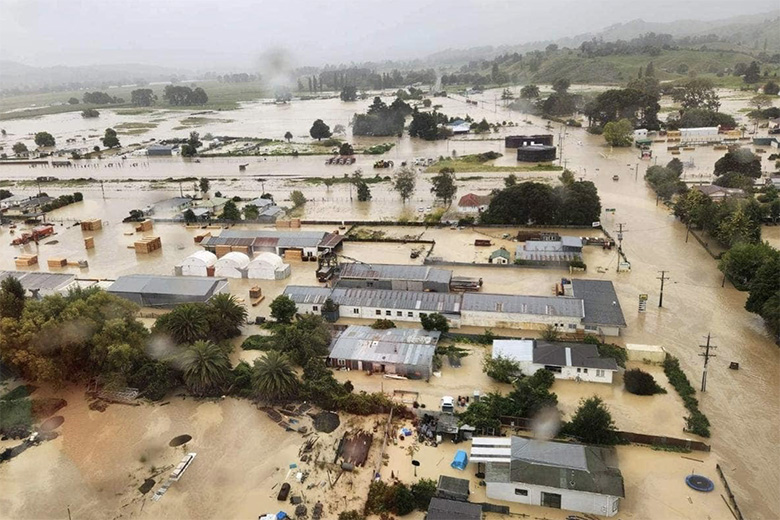For Wairoa doing nothing, like after Cyclone Bola in 1988, is no longer an option in terms of flood mitigation.
Per capita, Wairoa was the most impacted community of Tairāwhiti and Hawke’s Bay, and the most isolated following Cyclone Gabrielle.
Wairoa District Council mayor Craig Little said the district still had more than one hundred yellow-stickered homes, hundreds of displaced whānau, and a “tremendous amount of work to be done to return people to their homes and restore our district”.
Wairoa’s Flood Protection Stakeholder Group is exploring a range of critical flood mitigation options, including spillways and stopbanks, to provide future flood protection for the township.
Following the cyclone, the government earmarked $70 million for Wairoa to develop flood mitigation to a 1:100-year level to shift Wairoa’s 627 Category 2A properties to Category 2C and, in future, Category 1.
A Hawke’s Bay Regional Council engineering team has developed and tested models based on community discussions, thoughts, and ideas, with options based on river data, science, hydrology, and computer-generated modelling.
Little said a flood mitigation scheme needed to be in place so the district could manage future flood events in the best way possible.
“Flood mitigation is not a silver bullet, and we will never beat Mother Nature, but we can try to lessen the impacts.”
The stakeholder group’s task is to provide local knowledge and a grassroots Wairoa voice on the options being developed.
While the stakeholder group is an initial sounding board, the range of options explored and the rationale behind the findings and recommendations will be shared with the community in public presentations for further engagement and feedback.
Final stakeholder and community preferences will then go to the Tripartite Partners, comprising Hawke’s Bay Regional Council, Tātau Tātau o Te Wairoa Trust and Wairoa District Council, with the final decision resting with the Hawke’s Bay Regional Council as the authority responsible for flood protection.
At a recent meeting, stakeholders considered refined options based on additional work carried out in the field over the past few weeks. Considerations included hydrological, property, ecological, cultural, geotechnical, and archaeological impacts, and costings.
The stakeholder group stressed the importance of cultural impacts on intergenerational land, taonga such as marae, and challenges with whenua Māori under multiple ownership.
They also expressed concern that the longer it took to find a solution, the longer some homeowners within Category 2A would have to wait to be able to rebuild their flood-impacted homes.
A flood protection scheme will assist in managing future severe weather events, providing certainty for homeowners and businesses. It will also allow whānau to stay in their communities and help properties leave Category 3 and avoid the voluntary buy-out programme.
The stakeholder group has also requested whatever flood mitigation option was selected; the Wairoa River mouth’s active management needed to be improved.
The group also stressed the importance of an extensive peer review of any proposal to ensure it is the best solution for Wairoa.
Wairoa Deputy Mayor and stakeholder group member Denise Eaglesome-Karekare said there was no flood mitigation option which did not impact the community.
The group will meet again within the next fortnight and hopes to finalise its preferred options by the end of February and share these with the public in March.
Public Interest Journalism funded by NZ on Air

